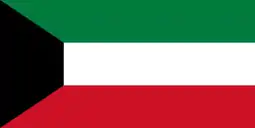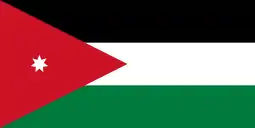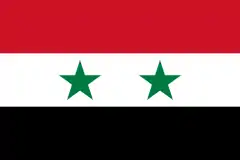Transport in Iraq
Transport in Iraq consists of railways, highways, waterways, pipelines, ports and harbors, marines and airports.
Railways
total:
2,272 km
standard gauge:
2,272 km 4 ft 8 1⁄2 in (1,435 mm) standard gauge
For more than two decades there have been plans for building a metro system in Baghdad. It is possible that part of the tunnels have been built, but that they are now used for military, shelter, hiding, and escaping purposes. U.N. inspectors have heard of the tunnels for years, but have not found their entrances. map In November, 2008, an overground service dubbed the Baghdad Metro began service. Local government in Baghdad is arranging feasibility studies for the construction of two new underground lines[1]
A 37 km monorail is planned in Najaf, which would link three Shi'ite holy sites.[1]
The first Iraqi Republic Railways train to Basra since the overthrow of Saddam Hussein's regime arrived on 26 April 2003. British troops hope to use the 68 km long railway to transport much-needed aid supplies from the port town of Umm Qasr to Basra.
In June 2011, it was announced that planning had begun for a new high-speed rail line between Baghdad and Basra, with a memorandum of understanding with Alstom having been signed.[2]
Maps
Railway links with adjacent countries
All adjacent countries generally use 4 ft 8 1⁄2 in (1,435 mm) standard gauge, but may vary in couplings. Neighbours with electrified railways – Turkey and Iran – both use the world standard 25 kVAC
 Turkey – via Syria
Turkey – via Syria Iran – one link partially under construction and a second link planned
Iran – one link partially under construction and a second link planned
- Khorramshahr, Iran, to Basra, Iraq – almost complete (2006)
- Kermanshah, Iran, and the Iraqi province of Diyala – construction commenced.
- see () or 2005.
 Kuwait – no railways
Kuwait – no railways Saudi Arabia -
Saudi Arabia - Jordan – partially constructed – break of gauge 4 ft 8 1⁄2 in (1,435 mm) standard gauge/1,050 mm (3 ft 5 11⁄32 in) gauge
Jordan – partially constructed – break of gauge 4 ft 8 1⁄2 in (1,435 mm) standard gauge/1,050 mm (3 ft 5 11⁄32 in) gauge Syria – same gauge – at Rabiya/Nurabiya
Syria – same gauge – at Rabiya/Nurabiya
Road Transport
An overland trans-desert bus service between Beirut, Haifa, Damascus and Baghdad was established by the Nairn Transport Company of Damascus in 1923.
Roads
total:
44,900 km
paved:
37,851 km,
unpaved:
7,049 km (2002)
Waterways
5,729 km (Euphrates River (2,815 km), Tigris River 1,899 km, Third River (565 km)); Shatt al Arab is usually navigable by maritime traffic for about 130 km. The channel has been dredged to 3 m and is in use. The Tigris and Euphrates Rivers have navigable sections for shallow-draft watercraft; the Shatt al Basrah canal was navigable by shallow-draft craft before closing in 1991 because of the Gulf War.
Pipelines
crude oil 5,432 km; natural gas 2,455 km; refined products 1,637 km; liquid petroleum gas 913 km
Ports and harbors
Persian Gulf
- Umm Qasr Port
- Khawr az Zubayr
- Al Basrah has limited functionality
- Al-Faw
Merchant marine
total:
32 ships (with a volume of 1,000 gross tonnage (GT) or over) totaling 606,227 GT/1,067,770 tonnes deadweight (DWT)
ships by type:
cargo ship 14, passenger ship 1, passenger/cargo 1, petroleum tanker 13, refrigerated cargo 1, roll-on/roll-off ship 2 (1999 est.)
Airports
Iraq has about 104 airports as of 2012. Major airports include:
- Baghdad International Airport
- Basra International Airport
- Mosul International Airport
- Erbil International Airport
- Sulaimaniyah International Airport
- Najaf International Airport
Airports – with paved runways
| Total | 75 |
| over 3,047 m | 20 |
| 2,438 to 3,047 m | 36 |
| 1,524 to 2,437 m | 5 |
| 914 to 1,523 m | 6 |
| under 914 m | 6 |
Airports – with unpaved runways
| Total | 29 |
| over 3,047 m | 3 |
| 2,438 to 3,047 m | 4 |
| 1,524 to 2,437 m | 3 |
| 914 to 1,523 m | 13 |
| under 914 m | 6 |
Heliports
20 (2012)
See also
References
- "Railway Gazette: Urban rail progress in Najaf and Baghdad". Retrieved 21 July 2010.
- "Iraq: France's Alstom signs high-speed rail line deal". BBC News Online. 24 June 2011. Archived from the original on 27 June 2011. Retrieved 27 June 2011.
External links
| Wikimedia Commons has media related to Transport in Iraq. |
